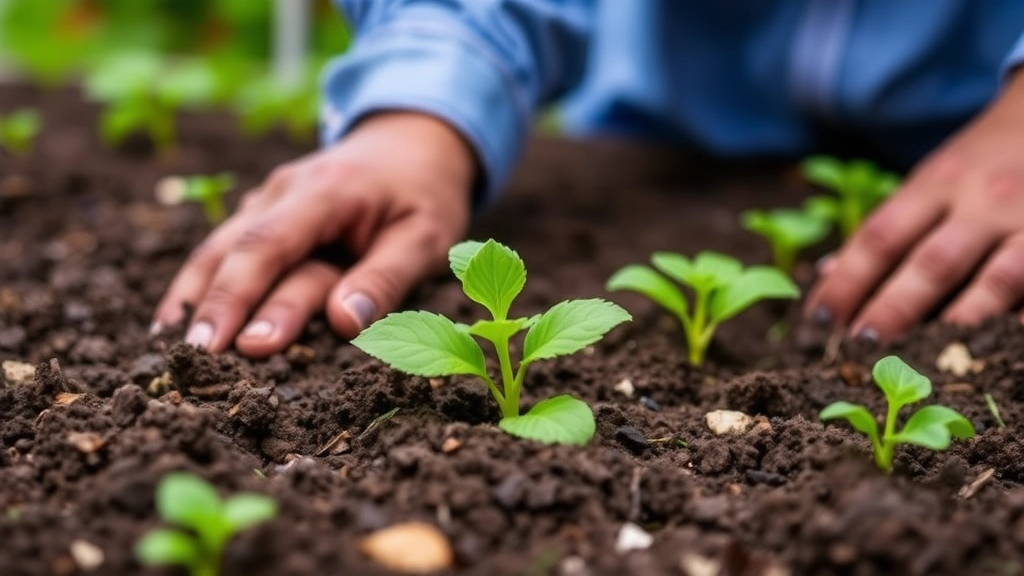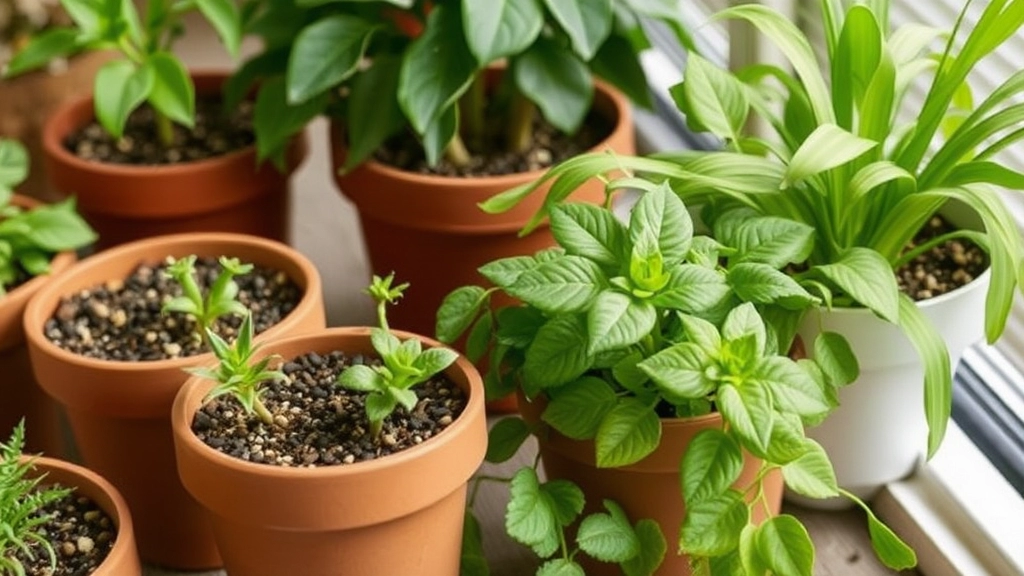Kalanchoe Hortagel Mother of Millions
If you’re looking to add a unique succulent to your collection, the Kalanchoe Hortagel Mother of Millions is a fantastic choice. Known for its ability to produce baby plants along the edges of its leaves, this plant is both fascinating and relatively easy to care for. Whether you’re a seasoned gardener or a newbie, understanding the basics of its care can help you keep your Mother of Millions thriving.
Care Guidelines
To get started, you’ll need to know the ideal lighting conditions, watering techniques, and soil preferences for your Kalanchoe Hortagel Mother of Millions. This plant loves bright, indirect sunlight and well-draining soil. Be cautious with watering; overwatering can be detrimental. By following these simple guidelines, you’ll ensure your Mother of Millions stays healthy and vibrant.
How to Care for Kalanchoe Hortagel Mother of Millions
Caring for Kalanchoe Hortagel, commonly known as Mother of Millions, can be a rewarding experience. Many plant enthusiasts often wonder how to keep this unique succulent thriving.
Understanding Your Plant’s Needs
To ensure your Mother of Millions flourishes, it’s essential to consider a few key factors:
- Lighting: This plant thrives in bright, indirect sunlight. A south-facing window is ideal.
- Watering: Overwatering is a common mistake. Allow the soil to dry out completely between waterings.
- Soil: Use well-draining soil, preferably a cactus mix, to prevent root rot.
- Temperature: Ideal temperatures range from 20°C to 25°C. Protect it from frost.
- Humidity: Mother of Millions prefers low humidity.
By focusing on these elements, you can create an environment where your Kalanchoe can thrive. For more detailed guidance, you might find the Complete Care Guide for Kalanchoe Tubiflora helpful. Additionally, if you are interested in other varieties, check out the Different Kalanchoe Species to diversify your garden.
Ideal Lighting Conditions for Mother of Millions

So, you’ve got your Kalanchoe Hortagel, also known as Mother of Millions, and you’re wondering about the best lighting conditions for it.
Let’s dive into it!
Bright, Indirect Light is Key
Mother of Millions loves bright light but not the harsh stuff. Here’s how to nail the lighting:
- Location: Place your plant near a window that gets plenty of bright, indirect sunlight.
- Avoid Direct Sun: Too much direct sunlight can scorch those lovely leaves.
- Rotate Regularly: Give your plant a little spin every couple of weeks. This ensures all sides get an even dose of light.
Signs Your Plant is Happy
You’ll know your plant is thriving when:
- The leaves are vibrant and not stretching towards the light.
- New growth appears, which is a great sign!
What If It’s Not Getting Enough Light?
If your plant looks leggy or the leaves start to drop, it might be time to rethink its lighting:
- Move Closer to the Window: Just a little shift can make a big difference.
- Supplement with Grow Lights: If natural light is limited, consider using a grow light to boost its happiness.
Watering Techniques to Prevent Overwatering
When caring for your Kalanchoe Hortagel, one of the most pressing concerns is ensuring proper watering. Overwatering is a common issue that can lead to root rot and ultimately harm your plant.
Key Considerations for Watering:
- Check the Soil: Before watering, always check the soil moisture. Insert your finger about an inch into the soil; if it feels dry, it’s time to water. If it’s still moist, wait a few days.
- Water Thoroughly: When you do water, ensure you give your plant a good soak. Water should flow out of the drainage holes at the bottom of the pot. This helps to ensure that the roots are well-hydrated.
- Use Well-Draining Soil: The right soil mix will help excess water drain away quickly, reducing the risk of overwatering.
- Seasonal Adjustments: Your watering schedule may need to change with the seasons. During the growing season (spring and summer), your Kalanchoe may need more frequent watering. In the dormant season (fall and winter), reduce watering significantly.
- Observe Your Plant: Keep an eye on your Kalanchoe. If the leaves start to yellow or become mushy, it’s a sign of overwatering. Conversely, if the leaves are wrinkled or shriveled, it may need more water.
For more detailed guidance on maintaining healthy Kalanchoe plants, check out our optimal watering tips for healthy florist Kalanchoe and our Kalanchoe Tomentosa Nigra care guide.
Best Soil for Healthy Growth

When it comes to caring for your Kalanchoe Hortagel, choosing the right soil is crucial for its overall health and growth.
What Soil Should You Use?
The ideal soil for Mother of Millions should be well-draining and rich in nutrients. Here are some key points to consider:
- Cactus or Succulent Mix: A pre-mixed cactus or succulent soil is often the best choice. It provides excellent drainage while retaining some moisture.
- Additives: To enhance drainage, consider mixing in perlite or coarse sand. This helps prevent root rot.
- pH Level: Aim for a slightly acidic to neutral pH (around 6.0 to 7.0). Testing kits are readily available to ensure your soil meets this requirement.
- Organic Matter: Incorporating some organic matter, like compost, can provide essential nutrients for your plant.
Why is Soil Important?
Using the right soil not only supports healthy growth but also helps prevent common issues like overwatering and root rot. A well-draining mix allows excess water to escape, keeping your plant’s roots healthy.
When caring for your Kalanchoe Hortagel, understanding its temperature and humidity needs is crucial. Have you ever wondered why your plant isn’t thriving despite your best efforts? Temperature fluctuations and humidity levels could be the culprits.
### Ideal Temperature Range
Kalanchoe Hortagel thrives best in a warm climate. Here’s what you should keep in mind:
– **Daytime Temperature**: Aim for 20°C to 25°C (68°F to 77°F).
– **Nighttime Temperature**: A drop to around 15°C to 18°C (59°F to 64°F) is acceptable.
– **Avoid Extremes**: Temperatures below 10°C (50°F) can be detrimental.
### Humidity Levels
Humidity plays a pivotal role in the health of your Mother of Millions. Here’s how to manage it:
– **Optimal Humidity**: Kalanchoe prefers low to moderate humidity levels, ideally between 40% to 60%.
– **Avoid High Humidity**: Excess moisture can lead to rot and fungal issues.
### Tips for Maintaining Ideal Conditions
– **Location**: Place your plant in a well-ventilated area, away from drafts.
– **Use a Thermometer**: This helps monitor the temperature accurately.
– **Humidity Tray**: If your home is too dry, consider using a pebble tray with water to increase humidity without soaking the roots.
For more detailed care tips, you might find the [complete guide to Kalanchoe Mother of Thousands care and propagation](https://planthq.org/complete-guide-to-kalanchoe-mother-of-thousands-care-propagation/) helpful. Additionally, understanding the [proven tips to get your Kalanchoe to bloom again](https://planthq.org/proven-tips-to-get-your-kalanchoe-to-bloom-again/) can further enhance your plant care routine.
VI. Pruning and Maintaining the Shape of Your Mother of Millions

So, you’ve got your Kalanchoe Hortagel, the Mother of Millions, thriving beautifully. But have you thought about how to keep it looking its best? Pruning is a crucial part of maintaining the shape and health of your plant.
Why Prune?
- Encourages Growth: Regular pruning stimulates new growth, keeping your plant vibrant.
- Prevents Overcrowding: It helps manage those little plantlets that pop up everywhere.
- Maintains Shape: A well-pruned plant looks tidy and more aesthetically pleasing.
When to Prune
- Spring: This is the best time to give your Mother of Millions a good trim. The plant is waking up from dormancy and is ready to grow.
- After Flowering: If your plant has bloomed, a light prune can help redirect energy back into the foliage.
How to Prune
- Gather Your Tools: You’ll need clean, sharp scissors or pruning shears.
- Identify Overgrown Areas: Look for any leggy stems or overcrowded sections.
- Cut Back: Trim back stems to just above a leaf node. This encourages bushier growth.
- Remove Dead Leaves: Snip away any yellow or dead leaves to keep the plant healthy.
Maintaining Shape
- Regular Checks: Keep an eye on your plant every few weeks.
- Adjust as Needed: If you notice it getting too bushy, don’t hesitate to prune again.
- Use Fertiliser: After pruning, a light feed can help your plant bounce back stronger.
Understanding propagation methods can enhance your gardening experience and expand your collection. One of the most fascinating aspects of the Mother of Millions is its ability to produce plantlets. These small offsets grow along the edges of the leaves, making propagation a straightforward process.
Identify Healthy Leaves: Choose mature leaves that have produced plantlets.
Gently Remove Plantlets: Carefully detach the plantlets from the leaf without damaging them.
Allow to Callous: Place the plantlets on a dry surface for a day or two to allow the cut end to callous over.
Plant in Soil: Once calloused, plant them in well-draining soil.
This method not only helps you propagate but also ensures the parent plant continues to thrive.
If you prefer a more traditional approach, stem cuttings are an effective method for propagating Mother of Millions.
Select a Healthy Stem: Look for a healthy stem that is at least a few inches long.
Make a Clean Cut: Use a sharp, clean knife or scissors to cut the stem just below a leaf node.
Allow to Dry: Let the cutting dry for a few hours to form a callous.
Plant in Soil: Insert the cutting into well-draining soil, ensuring the leaf node is buried.
Both methods are straightforward and can yield multiple new plants in no time. For more detailed guidance, you might find the complete guide to growing Kalanchoe Mother of Thousands particularly useful. Additionally, if you’re interested in the health benefits of this plant, check out the top health benefits of Kalanchoe Mother of Thousands.
Common Pests and Diseases: Prevention and Treatment

So, you’ve got your Kalanchoe Hortagel, the Mother of Millions, thriving beautifully. But what happens when those pesky pests or diseases show up uninvited?
Common Pests to Watch For:
- Aphids: These tiny green or black bugs love to suck the sap from your plants.
- Mealybugs: Small, white, and fluffy, they like to hide in the leaf joints.
- Spider Mites: You might notice fine webbing; these little guys can cause significant damage.
Prevention Tips:
- Keep it Clean: Wipe down leaves regularly to remove dust and potential pests.
- Quarantine New Plants: Always isolate new plants for a couple of weeks before introducing them to your collection.
- Natural Predators: Consider introducing ladybugs or lacewings to munch on aphids.
Treatment Options:
- Insecticidal Soap: Spray it on affected areas to eliminate pests without harming the plant.
- Neem Oil: This natural remedy works wonders against a variety of pests.
- Manual Removal: For a small infestation, just wipe them off with a damp cloth.
Common Diseases to Look Out For:
- Root Rot: Overwatering can lead to mushy roots. If you notice wilting, check the roots!
- Powdery Mildew: A white, powdery substance on leaves often indicates poor air circulation.
Prevention Strategies:
- Well-Draining Soil: Always use the right soil mix to avoid waterlogging.
- Good Airflow: Space out your plants to ensure they have room to breathe.
Treatment Strategies:
- Remove Affected Areas: Cut away any leaves or stems showing signs of disease.
- Adjust Watering: Let the soil dry out between waterings to combat root rot.
Is Mother of Millions Toxic to Pets and Humans?
As we explore the care of Kalanchoe Hortagel, it’s essential to address a common concern among plant enthusiasts: is Mother of Millions toxic to pets and humans?
Many plant lovers worry about the safety of their furry friends or young children when introducing new greenery into their homes.
Toxicity Overview
- Toxic Compounds: Kalanchoe species, including Mother of Millions, contain compounds known as bufadienolides.
- Effects on Pets: If ingested, these compounds can lead to symptoms such as:
- Vomiting
- Diarrhoea
- Lethargy
- In severe cases, it may affect the heart.
- Effects on Humans: While serious toxicity in humans is rare, ingestion may still cause:
- Nausea
- Stomach discomfort
- Allergic reactions in sensitive individuals.
Safety Precautions
To ensure a safe environment for both pets and children, consider the following:
- Placement: Keep your Mother of Millions out of reach of pets and young children.
- Education: Teach children about not eating plants without adult supervision.
- Monitoring: Keep an eye on pets when they are around houseplants.
By taking these precautions, you can enjoy the beauty of your Mother of Millions without worry. For a comprehensive understanding of this plant, check out the complete guide to caring for Kalanchoe Mother of Millions. Additionally, if you are curious about the various Mother of Thousands varieties, we have detailed information available.
Repotting Guidelines for Overgrown Plants

Have you noticed your Kalanchoe Hortagel, aka Mother of Millions, getting a bit too cozy in its pot?
It happens to the best of us.
Repotting is essential when your plant outgrows its home.
Here’s how to do it right.
When to Repot
- Signs of Overgrowth: If roots are poking out of the drainage holes or if the plant seems top-heavy, it’s time to repot.
- Season: The best time to repot is during spring or early summer when the plant is actively growing.
Choosing the Right Pot
- Size Matters: Select a pot that’s 1-2 inches larger in diameter than the current one.
- Drainage: Ensure it has drainage holes to prevent waterlogging.
Steps to Repot
- Prepare Your Materials: Gather your new pot, fresh soil, and any tools you might need.
- Carefully Remove the Plant: Gently ease the plant out of its old pot. You might need to tap the sides to loosen it.
- Inspect the Roots: Check for any dead or rotting roots. Trim these away with clean scissors.
- Add Fresh Soil: Place a layer of soil in the new pot. Position your plant in the centre and fill around it with more soil, ensuring it’s stable.
- Water Wisely: After repotting, give it a light watering. Don’t drown it—just enough to settle the soil.
Aftercare
- Light: Keep it in bright, indirect sunlight for a few days to help it adjust.
- Avoid Fertiliser: Hold off on fertilising for a month post-repotting to give it time to settle.
Differences Between Mother of Millions and Mother of Thousands
When caring for Kalanchoe species, many enthusiasts often confuse Mother of Millions with its close relative, Mother of Thousands. Understanding their differences can significantly enhance your gardening experience.
Troubleshooting Common Care Problems with Kalanchoe Hortagel Mother of Millions
So, you’ve got your Mother of Millions, and things aren’t going as smoothly as you’d hoped.
You might be wondering why your plant looks a bit sad or why it’s not thriving like you expected.
Let’s dive into some common care problems and how to tackle them.
Yellowing Leaves
If you notice yellow leaves, it could be a sign of overwatering.
- Check the soil moisture.
- If it’s soggy, let it dry out before watering again.
- Consider repotting in well-draining soil.
Dropping Leaves
Dropping leaves can be alarming.
This usually happens due to sudden temperature changes or stress.
- Keep your plant in a stable environment.
- Avoid moving it around too much.
Leggy Growth
Leggy growth means your plant is stretching for light.
This can make it look a bit sad and sparse.
- Move it to a brighter spot.
- Consider rotating it occasionally to encourage even growth.
Pest Problems
Pests like mealybugs and aphids can be a real nuisance.
- Regularly inspect your plant.
- Use neem oil or insecticidal soap if you spot any.
Root Rot
If your plant is wilting despite watering, root rot might be the culprit.
- Remove the plant from its pot and check the roots.
- Trim away any mushy roots and repot in fresh, dry soil.
For more detailed guidance, you might find our guide on why Kalanchoe leaves are dying helpful. Additionally, if you’re dealing with leggy growth, check out our optimal care tips for Kalanchoe Blossfeldiana.
FAQs on Kalanchoe Hortagel (Mother of Millions)
What are the ideal lighting conditions for Mother of Millions?
Mother of Millions thrives in bright, indirect light. Place it near a window with plenty of sunlight but avoid direct sun to prevent leaf scorch. Rotate the plant regularly to ensure even light distribution.
How can I tell if my Mother of Millions is getting enough light?
If the leaves are vibrant and not stretching towards the light, and you notice new growth, your plant is likely receiving adequate light.
What should I do if my plant isn’t getting enough light?
Move it closer to a window or consider using a grow light to supplement natural light.
What type of soil is best for Kalanchoe Hortagel?
A well-draining cactus or succulent mix is ideal. You can enhance drainage by adding perlite or coarse sand. Aim for a slightly acidic to neutral pH (6.0 to 7.0) and incorporate some organic matter like compost for added nutrients.
Why is soil choice important for Mother of Millions?
Using the right soil helps prevent overwatering and root rot by allowing excess water to escape, keeping the plant’s roots healthy.
Why should I prune my Mother of Millions?
Pruning encourages new growth, prevents overcrowding, and maintains the plant’s shape, making it more aesthetically pleasing.
When is the best time to prune my plant?
The best time to prune is in the spring or after flowering. This helps redirect energy back into the foliage.
How should I prune my Mother of Millions?
Use clean, sharp scissors or pruning shears to trim back stems just above a leaf node. Remove any dead or yellow leaves to keep the plant healthy.
What are common pests that affect Kalanchoe Hortagel?
Common pests include aphids, mealybugs, and spider mites. Regularly check your plant and treat infestations promptly.
How can I prevent pests on my Mother of Millions?
Keep the plant clean by wiping down leaves, quarantine new plants before introducing them to your collection, and consider using natural predators like ladybugs.
How can I treat pest infestations on my plant?
Use insecticidal soap, neem oil, or manually remove pests with a damp cloth for small infestations.
What are common diseases that affect Mother of Millions?
Common diseases include root rot and powdery mildew. Ensure well-draining soil and good airflow to prevent these issues.
How can I treat diseases on my Kalanchoe Hortagel?
Remove affected areas, adjust watering practices, and ensure the plant has adequate airflow.
When should I repot my Mother of Millions?
Repot when roots are poking out of the drainage holes or if the plant seems top-heavy. The best time to repot is during spring or early summer.
What should I consider when choosing a new pot?
Select a pot that’s 1-2 inches larger in diameter than the current one and ensure it has drainage holes to prevent waterlogging.
How should I repot my Kalanchoe Hortagel?
Prepare your materials, carefully remove the plant from its old pot, inspect and trim the roots, add fresh soil to the new pot, and water lightly after repotting.
What aftercare is needed post-repotting?
Keep the plant in bright, indirect light for a few days and avoid fertilising for a month to allow it to settle.
References
-
Kalanchoe Mother of Millions Plant Profile
-
Mother of Thousands/Mother of Millions Care
-
Mother of Thousands (Bryophyllum daigremontianum)
